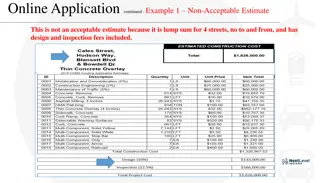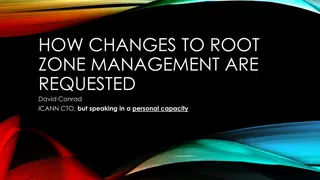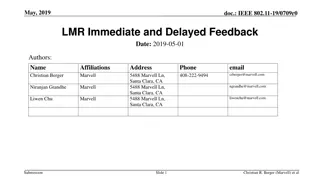Market Participants feedback on the Bidding Zone Review process
Market participants' feedback on the Bidding Zone Review process held on 8 October 2024 provides valuable insights and perspectives regarding the effectiveness and efficiency of the process. This feedback is crucial for enhancing transparency, fairness, and overall improvements in the market dynamics related to bidding zones within the energy sector. Stakeholders' opinions and suggestions gathered during this review play a significant role in shaping future strategies and policies in the energy market.
Download Presentation

Please find below an Image/Link to download the presentation.
The content on the website is provided AS IS for your information and personal use only. It may not be sold, licensed, or shared on other websites without obtaining consent from the author.If you encounter any issues during the download, it is possible that the publisher has removed the file from their server.
You are allowed to download the files provided on this website for personal or commercial use, subject to the condition that they are used lawfully. All files are the property of their respective owners.
The content on the website is provided AS IS for your information and personal use only. It may not be sold, licensed, or shared on other websites without obtaining consent from the author.
E N D
Presentation Transcript
Market Participants feedback on the Bidding Zone Review process MESC 8 October 2024
Considerations to pursue in the Bidding Zone Review Decision- makers should consider: Preserving the functioning of our internal electricity market to match production/demand at the least cost for consumers, including across borders. Safeguarding liquidity in the markets, essential for well-functioning market and efficient risk-management tools. Ensuring stability and predictability to support long-term investments and ensuring energy security. Promoting optimal grid usage and, where needed, expansion to make the most of the investments needed for the energy transition and European industrial competitiveness. Developing a forward-looking approach to the analysis (e.g. 2035) that considers various scenarios and sensitivities over extended time horizons. 2
Main comments regarding the BZR consultation ENTSO-E s consultation centred on 2 Pan-EU studies on Transitions costs, and Market liquidity and transaction costs. It also intended to explore measures to mitigate negative impacts, along with practical implementation considerations in case of a BZ reconfiguration. We have reservations regarding the future use of the 2 studies, as: they are inconclusive due to flaws in the use of proxy indicators, small sample sizes, and data transparency, potentially leading to over- or underestimated impacts; their scopes are too narrow and need to address broader economic impacts, such as reconfigurations' effects on long- term contracts, stranded costs, and cost redistribution among market participants. We take note that the market liquidity study showed that potential reconfigurations will negatively impact long-term markets by raising transaction costs and reducing liquidity. We regret that mitigation measures will be considered ex-post without prior communication on TSOs' stance If a decision for a BZ reconfiguration is eventually taken, we advocate an adequate lead time (minimum 5 years) to allow market participants to adapt and reduce transition costs. 3
Expectations for the next steps 1) Clear communication and transparency on: how findings from the two Pan-EU studies will be considered in the BZR assessment the assessment of the 20 other indicators and sensitivity scenarios the ex-post treatment of mitigation measures 2) Urge for modesty in the recommendations due to the identified flaws in the studies 3) BZR CG involvement and sharing of the final recommendations before publication 4) Implement lessons learnt that could be used to review the methodology (including bidding zones mergers, more forward- looking analysis, etc.) 5) Consider alternative policy measures that could achieve the potential benefits of a BZ reconfiguration, such as: enhancing coordination and planning of grid investments consistently with supply/demand investments, increasing system flexibility to solve local grid congestions, improving the ability of Market Participants to hedge price risk in the internal energy market, fostering signals to consumers for an efficient use of the grids (static Time-of-Use Tariffs), fostering specific connection tariff to incentivise the right location of new assets. 4























